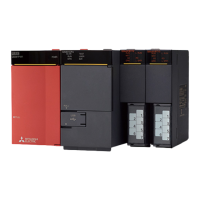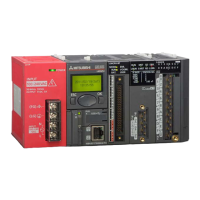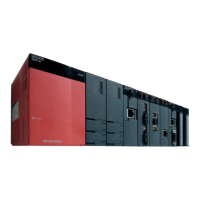6 BASIC INSTRUCTIONS
6.5 Data Conversion Instructions
279
6
Converting character string to 32-bit binary data
DVAL(P)(_U)
These instructions convert the character string in the device numbers specified by (s) and later to 32-bit binary data, and store
the number of digits in the device specified by (d1) and the binary data in the device specified by (d2).
■Descriptions, ranges, and data types
■Applicable devices
*1 T, ST, C cannot be used.
Ladder diagram Structured text
ENO:=DVAL(EN,s,d1,d2);
ENO:=DVALP(EN,s,d1,d2);
ENO:=DVAL_U(EN,s,d1,d2);
ENO:=DVALP_U(EN,s,d1,d2);
Operand Description Range Data type Data type (label)
(s) Character string to be converted to binary data,
or head device for storing the character string.
Character string ANYSTRING_SINGLE
(d1) DVAL(P) Head device for storing the number of digits of
the binary data after conversion
16-bit signed binary ANY16_S_ARRAY
DVAL(P)_U 16-bit unsigned binary ANY16_U_ARRAY
(d2) DVAL(P) Head device for storing the binary data after
conversion
32-bit signed binary ANY32_S
DVAL(P)_U 32-bit unsigned binary ANY32_U
Operand Bit Word Double word Indirect
specification
Constant Others
X, Y, M, L,
SM, F, B, SB
U\G T, ST,
C, LC
T, ST, C, D,
W, SD, SW, R
U\G Z LC LZ K, H E $
(s)
*1
(d1)
(d2)

